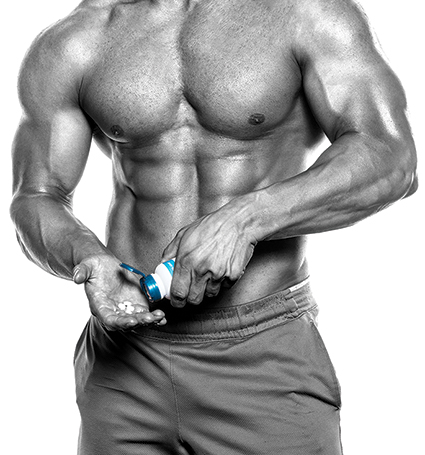Pre-Workout Stimulants: The Good, The Bad & The Ugly!
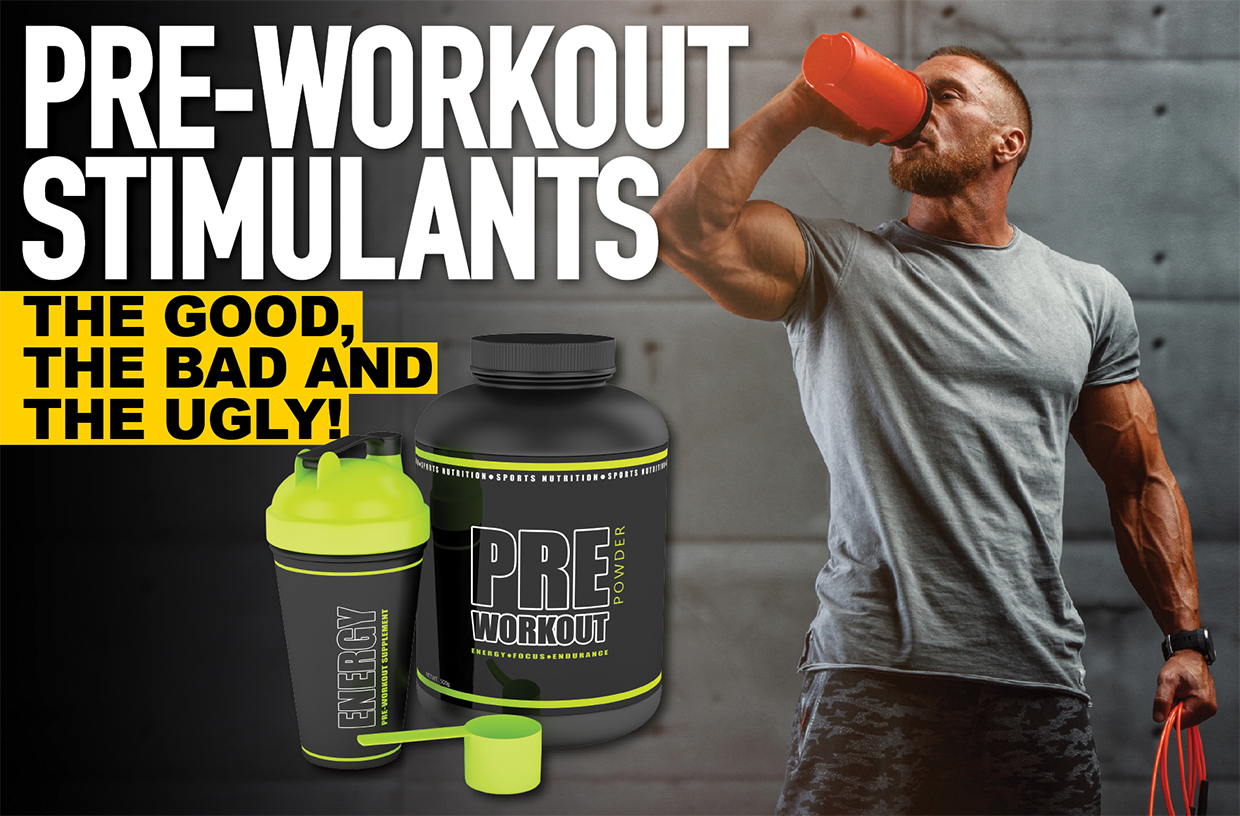
Stimulants have been used by athletes and bodybuilders for decades because of their ability to instantly improve both mental and physical performance. They have a direct effect on the central nervous system and can improve mental alertness, motivation, and even muscular strength and endurance. For these reasons, stimulants are extremely popular with strength athletes or those involved in high-intensity sports.
The most widely used stimulant in the world is caffeine, but there are other stimulants that athletes love to combine with or use in place of caffeine to crank up intensity and performance. In this supplement review, we’ll take a closer look at seven of the most popular stimulant agents being used by athletes and bodybuilders today.

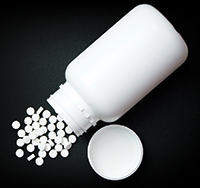 EPHEDRINE
EPHEDRINE
Ephedrine is one of the most powerful stimulants still legally available (at least it’s still available in Canada). In Canada, it can only be sold as a nasal decongestant, in 8-milligram tablets, and as a stand-alone ingredient. It used to be sold in fat burner products and combined with other stimulants such as caffeine, but Health Canada and the US Food and Drug Administration (FDA) put an end to that after its use was linked to several deaths. Many scientists and medical professionals however, believe ephedrine can be very safe when used appropriately and by those who have no preexisting medical issues.
In nature, ephedrine can be found in the herb ma huang, which has been used in traditional Chinese medicine for hundreds of years to treat asthma and bronchitis. Ephedrine works by acting on the adrenergic receptors and increasing the activity of norepinephrine and dopamine. Ephedrine is a non-selective alpha- and beta-receptor agonist. Since ephedrine is non-selective, it affects all types of adrenergic receptors, and that’s why it can increase blood pressure and heart rate. This is the one major downside to ephedrine as an increase in blood pressure and heart rate can end up having a negative effect on physical performance and can also cause anxiety in some people.
The other side effect that might be unappealing to strength athletes or those looking to pack on muscle are the appetite-suppressing effects of ephedrine. This is great if you’re dieting down to get ripped, but if you’re trying to eat for size and strength, it can be counterproductive. So, although the increase in norepinephrine can have positive effects on performance and mental alertness, the negative side effects of ephedrine can outweigh the benefits for a lot of people.

DMAA (1,3-DIMETHYLAMYLAMINE, AKA GERANIUM EXTRACT)
Before ever being used in sports supplements, DMAA (also called methylhexaneamine) was used as a nasal decongestant, just as ephedrine is nowadays. In 1944, pharmaceutical company Eli Lilly filed for a patent on the use of DMAA as a nasal decongestant, and in 1971 it marketed DMAA under the trademarked name Forthane. Since the 1970s, better options for nasal decongestants became available (such as ephedrine), and as a result, DMAA was no longer useful.
The only other use of DMAA since the 1970s has been in party pills in New Zealand. In 2005, Patrick Arnold, who is best known for discovering prohormones and being front and center in the BALCO steroid scandal, rediscovered DMAA after reviewing the old Eli Lilly patent and used it in his original formula for the product called AMP’d (by his former company, Ergopharm). After AMP’d hit the market, other supplement companies caught on to this ingredient, and it started to appear in more and more fat burners and pre-workout supplements up until recently.
While the FDA still hasn’t outright banned DMAA, early in 2011 it sent out a bunch of letters to supplement makers and pretty much told them to stop using the ingredient. Although some companies resisted, every single one of them has now complied with the FDA’s demands and yanked the ingredient from all formulas.
Health Canada officials took things one step further and late in 2011 classified the compound as a drug, therefore making it illegal to include in a dietary supplement in Canada as it’s now regulated under the Food and Drugs Act. Many DMAA users love the effects, even though it’s not as strong a stimulant as something like ephedrine. Just like ephedrine, DMAA can increase heart rate and blood pressure, but this effect didn’t appear to be quite as great as ephedrine.
It looks like DMAA is now a thing of the past and won’t be available anymore in the same way ephedrine is still available. Even Chinese ingredient suppliers are afraid to ship the ingredient to Canadian and US supplement manufacturers in fear of being red-flagged by the FDA or Health Canada. That said, you might as well forget about DMAA and look to other options for your stimulant fix!

DENDROBIUM
Since supplement companies knew that DMAA was only going to last so long, over the past year they’ve been on the lookout for a new stimulant that could step into its place. Already supplement formulators have found something new, a unique plant called Dendrobium nobile. The first sports supplement company to use this unique ingredient in a product is the US-based company Driven Sports, and it can be found in its pre-workout powder Craze. But dendrobium has actually been around for thousands of years, just like the ephedrine-containing herb ma huang.
Dendrobium is a member of the orchid plant family, and it’s one of the 50 fundamental herbs used in traditional Chinese medicine, where it has the name shihu and is used as a tonic and strengthening medicine. The plant is native to southern Asia, and Dendrobium nobile is by far the most widely used species because of its potent alkaloid content. More recently, researchers have discovered a variety of new chemical alkaloids in dendrobium, known to have some stimulating effects, which include delivering steady and sustained energy levels and improved mental focus.
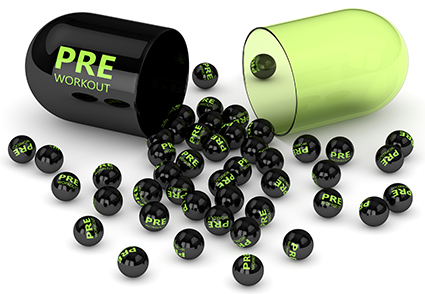
YOHIMBINE
Yohimbine is the active chemical found in yohimbe bark. Yohimbe bark contains approximately 6 percent yohimbine, but it’s also available in its synthetic form, yohimbine hydrochloride (HCl). Yohimbine has been studied for its fat-loss and aphrodisiac properties. Research shows that it can increase blood flow, nerve impulse transmission, and excitability in the genital area, and this is why some people find it useful as a “sexual stimulant.”
Yohimbine’s psychostimulant effects are attributed to its ability to penetrate the central nervous system and act as an alpha-2-adrenergic antagonist. By blocking alpha-2 adrenergic receptors, yohimbine prevents a negative feedback mechanism that blocks norepinephrine release, and in turn, this results in greater norepinephrine levels.
Yohimbine is a pretty powerful compound, but it does take some getting used to. Most people experience some form of nausea and hot and cold sweats when they first start using a higher dose. These effects don’t make it such a great performance enhancer, but it’s definitely one of the best fat-loss compounds available. The only problem for Canadians is that it’s classified as a drug in Canada and is only available by doctor’s prescription! In the US, yohimbine is completely legal for use in dietary supplements, but nearly every major manufacturer has stopped using it in its formulas because of the liability risk and related insurance issues.

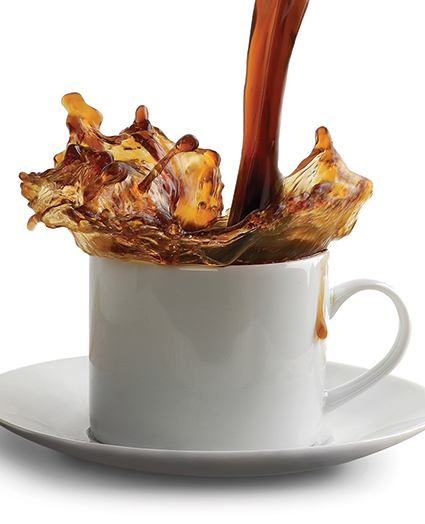 CAFFEINE
CAFFEINE
Caffeine is the king of all stimulants and the most widely used stimulant in the world. It’s one of the main ingredients in nearly every popular fat burner, energy supplement, and pre-workout on the market, and for good reason: It’s been proven to work!
Caffeine has many pharmacological effects on the body. It stimulates the central nervous system, heart and muscles and acts as an adenosine receptor antagonist and a phosphodiesterase inhibitor. By blocking adenosine receptors, caffeine can increase the release of neurotransmitters such as norepinephrine and dopamine. Caffeine also decreases airway resistance and stimulates respiration, again by way of adenosine receptor blockade and phosphodiesterase inhibition. Some research shows that caffeine can even decrease GABA and serotonin signaling.
In the end, all of these mechanisms make caffeine a great stimulant agent for increasing both anaerobic and aerobic performance and mental focus! The only downside to caffeine is you can develop a tolerance to it rather quickly, so that’s why most seasoned supplement users will always stack other stimulants with caffeine to get the most out of it.
| NATURAL SOURCES OF CAFFEINE |
|---|
| YERBA MATE |
| GUARANA |
| GREEN TEA & BLACK TEA |
| KOLA NUT |
| COFFEE |
THEOBROMINE
Theobromine is similar in structure to caffeine and falls into the same class of methylxanthine compounds. Theobromine naturally occurs in chocolate, tea, and the kola nut, but the amounts found in these natural sources wouldn’t be enough to have any significant physiological effects on the body. Although theobromine is similar in structure to caffeine, it’s much weaker as a stimulant. In fact, most people who use it don’t “feel” anything because it’s only about 10 percent the strength of caffeine.
Theobromine is somewhat unique compared to most other stimulants in that it’s actually been shown to decrease blood pressure, while most other stimulants are known to increase blood pressure. It has mild vasodilating properties, similar to the amino acid arginine, so it could potentially increase blood flow. That said, the rest of the stimulants previously mentioned in this review can offer much greater effects than theobromine could ever offer. It could still be useful as an add-on ingredient in a fat-loss formula, but it’s just not a very powerful stimulant.
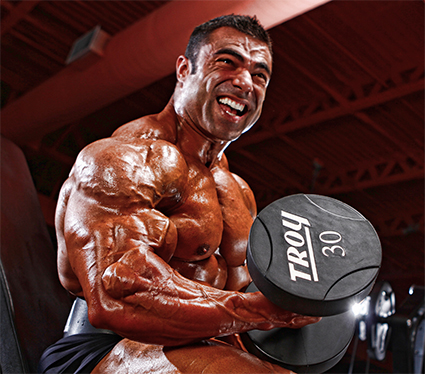
THEOPHYLLINE
Theophylline is another methylxanthine stimulant and falls into the same class of chemicals as caffeine and theobromine. Theophylline is only available as a prescription drug and is used to treat respiratory conditions, such as asthma. Theophylline has similar effects to caffeine and works by affecting the adenosine receptors and the phosphodiesterase enzymes.
In addition to these effects, theophylline can also cause smooth muscle relaxation and has bronchodilating effects similar to ephedrine. But just like ephedrine, it can also have a significant impact on increasing heart rate and blood pressure. Again, these effects can be counterproductive to increasing performance in the gym or on the playing field. Furthermore, it could be dangerous to combine with other stimulants or for people with certain medical conditions.
This compound is very difficult to get your hands on since it’s only available by prescription. But even if it were available for use, most people would still consider most other stimulants as better options for safety and effectiveness.

CREATING YOUR STIMULANT STACK
When it comes to creating the ideal performance-enhancing stimulant stack, it usually takes a little bit of trial and error. The ingredients and dosages that work great for one person may not work in the same way for others. So when deciding on which stimulants to combine and in what dosages, always start with a conservative approach so you can assess your individual tolerance. There’s nothing worse than being overstimulated to the point where it actually makes it more difficult to focus and perform at your best.
 ABOUT DON GAUVREAU MSc, CSCS: Known in the industry as The Supplement Godfather, Don is one of the leading researchers and product formulators in the sports supplement industry. Follow him on Twitter at: https://twitter.com/rippedfreak
ABOUT DON GAUVREAU MSc, CSCS: Known in the industry as The Supplement Godfather, Don is one of the leading researchers and product formulators in the sports supplement industry. Follow him on Twitter at: https://twitter.com/rippedfreak
To read more from the Supplement Godfather, click HERE!
Click HERE to sign up for our free newsletter!


